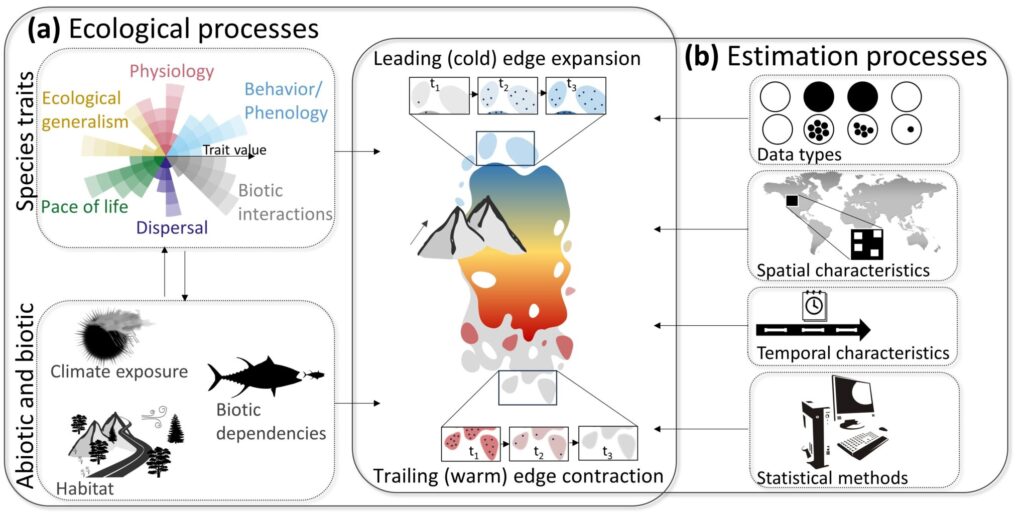
Huangshan mountain with Pinus hwangshanensis trees. Photo credit: Peter05031960, Wikimedia Commons.
Despite hundreds of reports of species shifting their ranges towards the poles and the mountain submits in response to climate change, scientists still grapple to understand the complexity of the range shift processes. A new article in Nature Reviews Earth & Environment reveals that only 59% of documented species range shifts are consistent with climate change expectations, which the authors explain by the influence of additional non-climatic drivers, constraints related to habitat characteristics, variability in the ability of different species to move or to persist and the biotic dependencies with other species.
Led by CSP’s Lise Comte, the same group of researchers provide a series of recommendations in an opinion article published in Global Change Biology to improve the analytical methods used to understand and predict climate-mediated species range shifts. They highlight the need to more effectively integrate species traits as well as habitat and methodological factors into species distribution research in order to improve our ability to develop effective strategies that support biodiversity conservation under climate change.

Set of factors and interactions that may influence the documented patterns of species range shifts, which in turn may explain the lack or counter-intuitive response documented.

